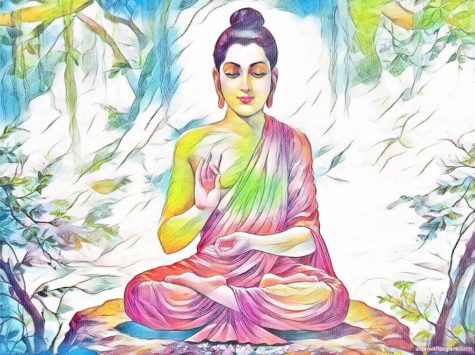Here is a simple tutorial and a simple mantra for a meditation technique. It is very similar to the Transcendental Meditation technique, and if you have a different mantra that you’d like to use, feel free to do so.
The instruction is from the book Deep Meditation by Yogani. The book is a quick and easy read, a slim 100-page book in pretty big type-and at a little under ten bucks, it’s also a bargain. And while I recommend you buy a copy, I thought I’d provide ten key points from the book which are listed below.
1. For most people, twenty minutes is the best duration for a meditation session. It is done twice per day, once before the morning meal and the day’s activity, and then again before the evening meal and the evening’s activity.
2. A word on how to sit for meditation: The first priority is comfort. It is not desirable to sit in a way that distracts us from the easy procedure of meditation.
3. For our practice of deep meditation, we will use the thought I AM. This will be our mantra. We can also spell it AYAM.
4. While sitting comfortable with eyes closed, we’ll just relax. We will notice thoughts, stream of thoughts. That is fine. We just let them go without minding them. After about a minute, we gently introduce the mantra.
5. Whenever we realize we are not thinking the mantra inside any more, we come back to it easily.
6. As soon as we realize we are off into a stream of thoughts, no matter how mundane or profound, we just easily go back to the mantra. Like that. We don’t make a struggle of it. The idea is not that we have to be on the mantra all the time.
7. Thoughts are a normal part of the deep meditation process. We just ease back to the mantra again. We favor it. Deep meditation is going toward, not pushing away from.
8. No struggle. No fuss. No iron willpower or mental heroics are necessary for this practice. All such efforts are away from the simplicity of deep meditation and will reduce its effectiveness.
9. When we realize we have been off somewhere, we just ease back into the mantra again. We are reading it inward with our attention to progressively deeper levels of inner silence in the mind.
10. This cycle of thinking the mantra, losing it, and coming out into a stream of thoughts is a process of purification. It is very powerful, and will ultimately yield a constant experience of inner silence in our meditation and, more importantly, in our daily activity.




Leave a Reply